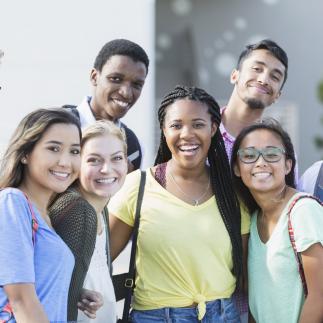Restorative Restart

Summary
The COVID-19 pandemic has affected all students; however, its impact has been particularly devastating for students of color, students from low-income families, English learners, and other marginalized children and youth. As transmission rates decline and vaccination rates increase in California, many are eager to return to normalcy, but we must all recognize that even the prepandemic normal was not working for all students. The 2021–22 school year, therefore, constitutes a critical opportunity for schools to offer students, families, and educators a restorative restart. This is a moment for districts and schools to reimagine and rebuild equitable school systems where all students have the support and opportunities they need to thrive.
Critical Equity Actions for a Restorative Restart
Every California district should take 6 weeks to offer students, families, and educators a restorative restart to the 2021–22 school year, leveraging recent federal and state investments to do so. During this time, schools should prioritize practices that not only begin to reverse the effects of pandemic-induced lost learning opportunities but also lay the groundwork for systemic transformation using evidence-based, whole child approaches to advance learning and engagement for all students.
The path towards reimagining and rebuilding education in California begins with the following 14 action areas. Click on each numbered practice below to go to the section of the report that provides research behind each action and practical guidance for its implementation.
Center relationships between and among families, students, and educators:
Understand whole child needs:
Strengthen staffing and deepen community-based partnerships to address students’ individualized learning and mental health needs:
Prioritize racial equity, relevance, and rigor in curriculum and instruction:
Lay the groundwork for systemic transformation:
After more than a year of strictly virtual or physically distant participation in school, students are in need of a restorative restart—an opportunity to feel safe, seen, supported, and engaged in learning. The objective should not be to put back into place the previous practices that led to inequities but rather to reimagine and rebuild a system that supports all students with a focus on equity. During the 2021–22 school year, education leaders, educators, and other stakeholders have the potential to reimagine and rebuild schools. They can not only reverse the effects of pandemic-induced lost learning opportunities but also lay the groundwork for systemic transformation by using evidence-based, whole child approaches to advance learning and engagement for all students.
This report builds upon the April 2021 brief Reimagine and Rebuild California Schools: Restarting School with Equity at the Center, which was endorsed by over 40 California-based family and student engagement organizations, associations representing educators and system leaders, research institutes, and civil rights and equity groups. The report summarizes the evidence undergirding the brief and presents concrete practices to guide implementation.
Myung, J., Kimner, H., Cottingham, B. W., Diaz Luna, S., Shiels, S., & Hough, H. J. (2021, May). Restorative restart: The path towards reimagining and rebuilding schools [Report]. Policy Analysis for California Education. https://edpolicyinca.org/publications/restorative-restart¶



